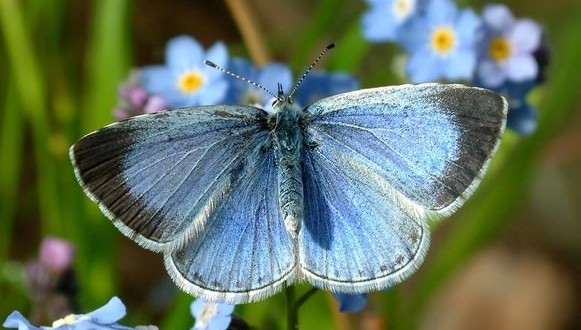According to a recent report from the Center for Biological Diversity, the population of monarch butterflies has fallen by 90 percent in the past 20 years.
This species is unique among butterflies in making incredible transcontinental migrations from Canada and the United States to wintering grounds in Mexico. The Monarch Monitoring Project is a research and education program run through NJ Audubon’s Cape May Bird Observatory that collects data on the hundreds of thousands of Monarchs moving through Cape May each Sept. and Oct. Weighing a mere half gram, Monarchs traveling the Atlantic coast on a 2000 mile journey to Mexico become concentrated in Cape May before crossing the Delaware Bay, allowing for census counts and tagging individual butterflies in order to provide a better understanding of their movements.
Sept. marks the 25th year of the Monarch Monitoring Project fall migration surveys in Cape May and public tagging demonstrations begin tomorrow. As the season kicks off, New Jersey Audubon is also supporting the adoption of a suite of bills introduced in the New Jersey Legislature this summer that aim to help Monarchs better survive. Two bills are focused exclusively on Monarchs, while others will benefit a host of other pollinator species through enhanced awareness and improved habitat conditions.
“Butterfly population decline is an important indicator of ecosystem health,” explained Assemblyman Timothy Eustace, D-Bergen and Passaic, sponsor of several bills focused on butterflies. “Drastic reductions in certain species of bee and bat populations have demonstrated there are unforeseen consequences to a single species decline, and this legislation lends a helping hand to Monarchs.”
Milkweed—the plant critical for Monarch survival—is not a weed, but rather a native perennial plant that provides both food for Monarch caterpillars with its leaves, and nectar for adult butterflies through its bright flowers. As Monarch caterpillars will not feed on other plant species, they depend on the availability of milkweed to lay their eggs so the caterpillars are provided a food source. Milkweed abundance has declined substantially as a result of widespread herbicide use in agriculture, loss of agricultural lands and open space to development, and landscaping practices that favor short lawns rather than taller, native vegetation. Widespread loss of milkweed has been linked to Monarch decline.
“Monarchs are one of our most visible and well known butterflies and their migratory journey is captivating,” said Dale Rosselet, NJ Audubon’s Vice President for Education. “With just a little bit of understanding and planning we can make a great contribution to their survival by providing the one essential plant they need – milkweed.”
One bill introduced this June will establish an “Adopt a Monarch Butterfly Waystation” (A3353) to provide resources and coordination for planting milkweed on public lands and parks, while the “Milkweed for Monarchs” (A3352) program will focus efforts on drainage basins that could provide ideal growth opportunities for milkweed in otherwise unused areas. An “Integrated Roadside Vegetation Management Program” (A3354) will create better habitats for flowering plant species such as milkweeds and others that provide sources of nectar along our highways. Current mowing regimes cut plants before they are able to bloom and provide nectar for butterflies and other pollinators.
“By making milkweed more available on public lands, parks, roadsides and in private yards and gardens, Monarchs will have a better chance for long-term survival,” said New Jersey Audubon Conservation Advocate Megan Tinsley. Added Gretchen Whitman, New Jersey Audubon’s Sanctuary Director at the Nature Center of Cape May, “Individual citizens can make a difference by participating in an adopt a waystation or drainage basin, as well as planting milkweed in their yards or community spaces so Monarchs will have a place to feed and lay their eggs.”
New Jersey Audubon also supports legislation that will improve habitat for Monarchs and other wildlife by removing barriers to property owners cultivating habitat—including flowering plants such as milkweed. The Private Wildlife Habitat Certification bill (A3133) would provide homeowners with an affirmative defense against nuisance complaints and code violations arising from providing habitat for wildlife by way of native vegetation that provides sources of nectar, seeds and berries. 30 percent of land in New Jersey is considered urban, including lawn areas such as office parks, golf courses, athletic fields and residential yards.
Dick Walton, Director of the Monarch Monitoring Program noted, “While our data from the Atlantic coast migration doesn’t reflect the drastic decline in Monarch numbers seen in other parts of North America, we have seen a decline in milkweed patches which could have far-reaching consequences for long-term population health.”
Agencies/Canadajournal
 Canada Journal – News of the World Articles and videos to bring you the biggest Canadian news stories from across the country every day
Canada Journal – News of the World Articles and videos to bring you the biggest Canadian news stories from across the country every day



